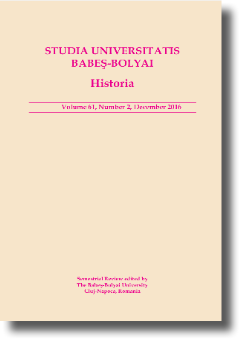Die österreichische Münzreform von 1857-1858 und die siebenbürgischen “Gelegenheitschriften anlässlich der neuen Währung”. Mit besonderer Betrachtung der “Gespräche der Bauern Hans und Georg über das neue Geld“ (1858)
Keywords:
Austrian Empire; Transylvania; modern numismatics; everyday life; prices; language history.Abstract
It is proposed in the present article to describe the various stages of the 1857-1858 monetary reform in the Austrian Empire and to analyse Transylvanian booklets explaining the provisions of the coinage treaty in layman's terms. The monetary reform was a major endeavour, which annulled the many currencies recognized as legal tender within the Austrian Empire, including the Lombardo-Venetian Kingdom, and introduced the decimal system, wherein 100 Kreuzer/1 Gulden replaced the previous 60/1 ratio. The new, so-called 'Austrian', currency was nevertheless complicated by the exchange rates of the old curriences, which created calculation problems. This is the reason why booklets were printed throughout the Empire to explain conversion and rounding rules to the general public. At least seven such booklets were printed in Transylvania, the foremost being a text by Prussian pedagogue Carl Unverricht. The explanations are laid out as a dialogue, following the catechetical method, or as a school drama script. Two peasants are portrayed, one as the teacher and the other as a pupil. The text includes details about the daily life of a peasant, as well as information on the currency circulation and the price level for the year. The booklet was translated into Romanian, using a mix of the Transylvanian speech variety, words crudely adapted from German, as well as a series of neologisms preferred by the Romanian intellectual elite of the time, showing the desire of the same elite to build a specialist vocabulary.
Rezumat: În articolul de faţă se descriu etapele reformei monetare din 1857-1858 în Imperiul austriac şi se analizează broşurile ardeleneşti în care a fost explicată reforma pe înţelesul poporului. Reforma monetară a fost una de mare amploare, care a desfiinţat numeroasele valute ce existau în Imperiul austriac, inclusiv în Regatul lombardo-veneţian, şi a introdus sistemul decimal, florinul de 100 de creiţari înlocuindu-l pe cel de 60 de creiţari. Noua valută, zisă ”austriacă”, se afla însă într-un raport complicat cu cele vechi, ceea ce crea probleme pentru calculul schimbului. De aceea, s-au publicat în întreg Imperiul broşuri cu scopul de a explica poporului regulile de conversiune. În Ardeal au apărut cel puţin şapte astfel de texte, dintre care cel mai complex este cel al pedagogului prusac Carl Unverricht. Explicaţiile sunt redactate sub formă de dialog, după metoda catehetică, sau precum într-o piesă de teatru şcolară. Sunt înfăţişaţi doi ţărani, unul preluând rolul de învăţător, iar celălalt fiind elevul. Textul conţine unele detalii despre viaţa cotidiană a ţăranilor, precum şi informaţii despre circulaţia monedelor şi preţurile din epocă. Cărticica a fost tradusă în română, folosindu-se un amestec între româna ardelenească, germanisme grosolane şi neologisme proprii elitei intelectuale româneşti de atunci, ceea ce arată dorinţa elitei intelectuale de a crea un vocabular românesc de specialitate.
Cuvinte-cheie: Imperiul austriac; Transilvania; numismatica modernă; viaţa cotidiană; preţuri; istoria limbii
Downloads
Published
How to Cite
Issue
Section
License
Copyright (c) 2016 Studia Universitatis Babeș-Bolyai Historia

This work is licensed under a Creative Commons Attribution-NonCommercial-NoDerivatives 4.0 International License.






